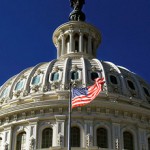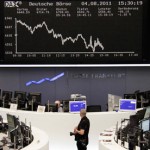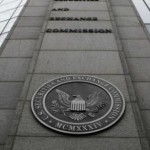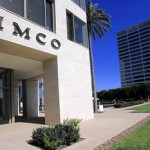Avoid Those Rose-Colored Dividends
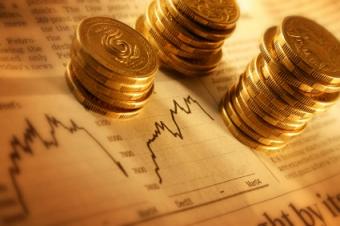
Don’t let investor communication objectives stand in the way of making sound dividend policy decisions during a downturn.
Although there are numerous dividend-related metrics, including dividend yield and dividend-payout ratio, any thorough discussion of dividend policy should focus heavily on the signaling effects of dividends. Dividend proponents seek a steady stream of regularly increasing dividends per share to reveal a healthy company to the markets. Indeed, many investors use such signals as one of their criteria for deciding where to invest.
Of course, corporate executives and board directors know this and their choices on dividend policy are sometimes designed to appeal to the dividend proponents. Said differently, managements design their dividend policy as a communication vehicle. At times, they choose to issue a dividend or increase the dividend per share not because performance has improved, but to offset an otherwise negative message of a performance decline.
Setting dividend policy is difficult because there is no precise calculation a company can use to set the optimal dividend payout. Many qualitative and quantitative factors, however, are typically considered: How much cash is the company generating? How much of the cash flow is needed for reinvesting in the business? How desirable are the expected investments in terms of growth and returns? How sustainable or volatile are the cash flows? And countless more.
Setting dividend policy during an economic and stock market downturn is particularly difficult. And although nobody has a functioning crystal ball, we all know the market has been rising for a while and at some point over the next few years we are likely to see a decline. To help companies prepare their dividend policies, we studied the effects of changes in dividend policy during the last major stock market decline to serve as a guide.
Of the current members of the S&P 500, 468 were public from the peak on October 9, 2007 through the trough on March 9, 2009 and had median total shareholder return (TSR), including dividends and share price appreciation, of negative 53 percent during the decline. An investment of $1000 in the median company would have been worth $470 at the end of the 17-month period.
There were no dividends paid in 2007 through 2009 by 26% of the companies, and the median TSR for this group was the very same 53 percent. That suggests that non-dividend payers were no better or worse off.
Interestingly, 4 percent of the companies paid no dividend in 2007 but had initiated a dividend by 2009. In the middle of the worst financial crisis since the great depression these companies decided to initiate a dividend that dividend proponents might interpret as a sign of strength in the face of adversity. Unfortunately, investors didn’t see it that way, and these companies actually delivered worse TSR than the general market, with a median of negative 69 percent.
For perspective, consider that an investment of $1000 in the median company initiating a dividend by 2009 would have been worth $310, which is 34 percent lower than the $470 for the broad market. Those initiating dividends actually destroyed substantially more value during this period!
The worst performer was AIG. But fully 80% of these companies underperformed the market median. Why did these companies perform so poorly? In many cases it seems they may have been trying to compensate for poor performance with the good news of initiating a dividend. Investors seem to have seen right through the “spin” of their dividend initiation and focused on the weak performance. Don’t try to prop up perceptions during tough times with a rose-colored dividend.
How about companies that had a dividend in 2007 but eliminated it by 2009? About 3 percent of companies eliminated their dividend. Their median TSR was negative 52 percent – almost the same as the broad market. How could companies eliminating their dividend fair the same as others? It seems investors saw the action as prudent given the magnitude of the financial crisis. If cutting the dividend is the correct course of action to protect the company’s cash flow during difficult times, don’t be afraid to do it.
The majority of companies had a dividend in 2007 and in 2009, and these companies delivered median TSR of -49 percent, a bit better than the market overall. Those that reduced their dividend had worse TSR than those that increased their dividend, as would be expected. But among those that increased the dividend, those increasing by more than 25 percent did worse than those increasing less than 25 percent. Perhaps some of the larger increases were perceived similarly to the dividend initiators, and that may have influenced this negative outcome.
So what does this all mean for dividend policy? The following are some guidelines for dividend policy during the next stock market and economic downturn:
— Dividends are important, but underlying performance is more important. Don’t try to compensate for weak performance by overdoing the dividend, as investors are likely to see right through it.
— If the financial condition of a company declines so much that the best course of action is to conserve cash by eliminating the dividend, seriously consider eliminating it. This is never a nice situation to face, but if it is in the best interest of the company, the act of cutting the dividend is unlikely to cause of any further decline in share price than would otherwise have occurred.
— In advance of the next downturn, be prudent with leverage and protect cash flow. Try to avoid having to take drastic action on dividends and other discretionary cash flow items in the next downturn.
Every company faces a different situation. But hopefully these suggestions will help companies make better decisions and weather the next market storm.
(By Gregory V. Milano)
Gregory V. Milano, a regular CFO columnist, is the co-founder and chief executive officer of Fortuna Advisors LLC, a value-based strategic advisory firm. Copyright © 2014 Fortuna Advisors LLC. All rights reserved.
Source: CFO









